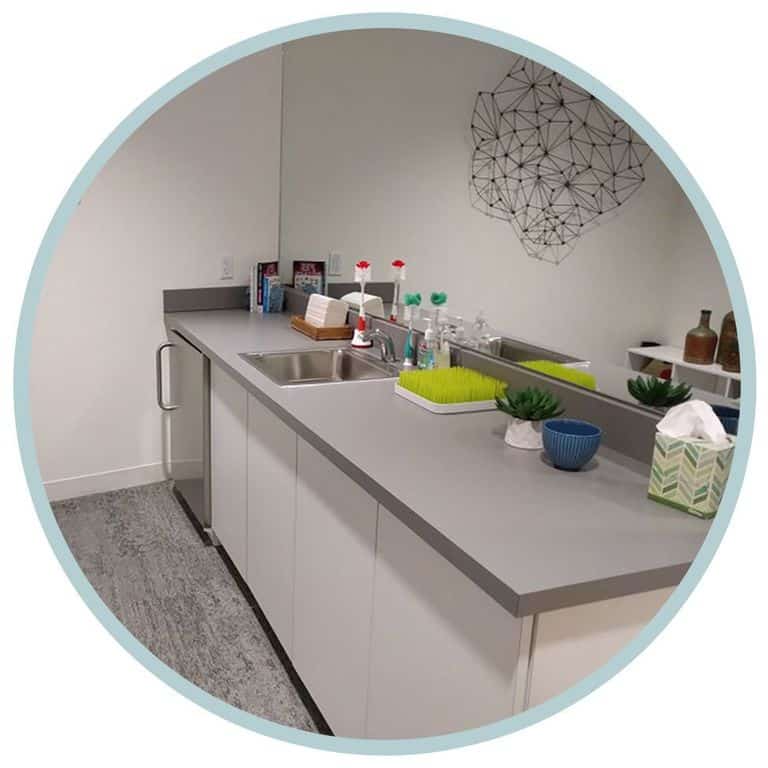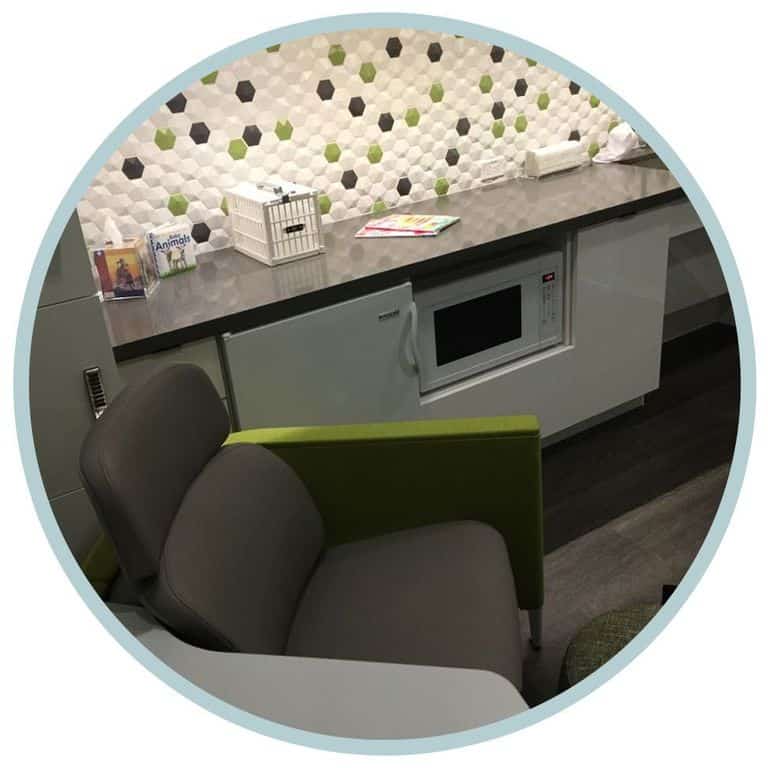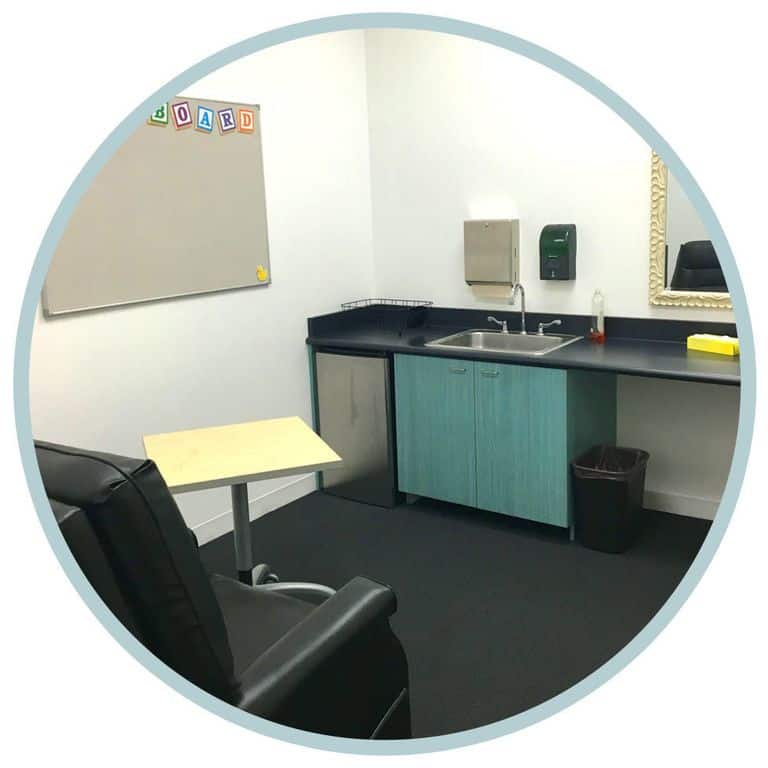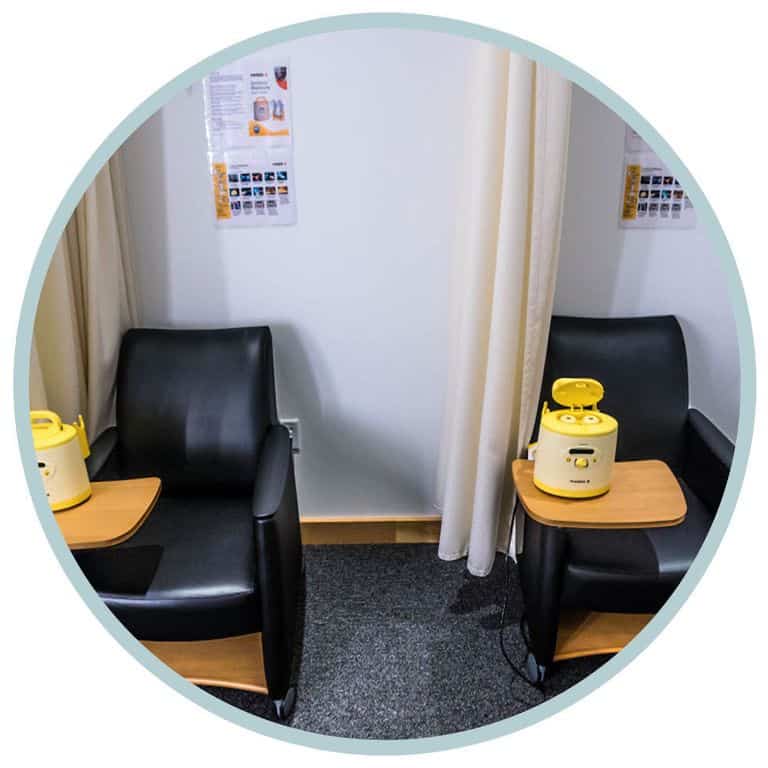The US lactation room law is explicit — If you have 50 or more employees in your office, a lactation room is a must for nursing mothers to pump breast milk for their babies. In smaller offices, you could get an exemption on the basis it can create unnecessary hardship. The law is about providing private space for nursing mothers.
The Requirements for a Lactation Room at work:
- – The physical room
- – A comfortable chair and table
- – A refrigerator
- – A sink for rinsing out pump parts using soap and paper towels
- – Anti-bacterial wipes and tissues to clean up the flat surface
- – Hospital-grade pump
- – Decorations
- – Microwave Steam Bag
- – Support for Lactation moms
- – A task force
Helping nursing mothers transition back to work at the expiry of their maternity leave would be a great experience. And one way to do this is by creating a comfortable and safe space for mothers to pump breast milk.

Working moms have been breastfeeding before returning to work – for the past six to 12 weeks. Some may want to breastfeed for the first six to 12 months (after childbirth), without the help of their employer. That can be such a tall order.
If your establishment has a large of lactating mothers, you can have a schedule to prevent others from access the room while it is in use. You can create a private online calendar or better yet, an email alias could be used in case somebody needs to inform others of any change in pumping needs.
You don’t want them thinking they are in a toxic work environment where they don’t feel loved or appreciated for their inputs or contributions to the growth of the organization. Read more in our article “What Is A Toxic Work Environment? : 10 Signs To Identify a Toxic Work Environment.”
If you are a nursing mother, you may be interested in reading this recent study that found a temporal relationship between circadian rhythm and breast milk.
that found a temporal relationship between circadian rhythm and breast milk.
Having a lactation room for employees is not such a big deal after all. The requirements are easy to come by, and the information below explains in details
The Room
The first requirement is the physical room. The room will be ideal if it has no access to any other person than lactating moms and is lockable on both sides. The reason is simple – nursing moms pump on a schedule, and you wouldn’t want their office meetings or duties to prevent them from doing that.
An extra conference room would perfectly fit; you only have to ensure that space is clean and private.
But if you lack an extra conference room, then you have to improvise by creating a private room within a much bigger space. The benefit of this approach is that you can make the room as large or small as you wish, and nobody asides lactating moms can access it.
A Comfortable Chair and a Table
A rocking chair or comfy glider readily comes to mind here. But these are pretty expensive and may not fit for a lactating room. When you pump, it is essential that you sit upright while your feet go flat on the floor. A spare desk chair is a perfect fit, and if you have one lying idle in the office, put it to good use.
or comfy glider readily comes to mind here. But these are pretty expensive and may not fit for a lactating room. When you pump, it is essential that you sit upright while your feet go flat on the floor. A spare desk chair is a perfect fit, and if you have one lying idle in the office, put it to good use.
You’d also need a table, and a spare desk will fit in case as it provides ample counter space. Some mothers may use that opportunity to eat, drink, or possibly listen to a podcast.
A table in front of the chair is essential for putting all parts and accessories. You don’t want anybody knocking off their pumped milk (freshly prepared) as a result of little or no space to maneuver.

Refrigerator
A refrigerator for nursing mom is not a bad idea — this is required in the lactating room. You can imagine what it means to store your freshly pumped milk in a refrigerator without sharing a space with a leftover tuna sandwich.
is not a bad idea — this is required in the lactating room. You can imagine what it means to store your freshly pumped milk in a refrigerator without sharing a space with a leftover tuna sandwich.
You can also bag up the used pump parts and have them stock in the fridge. It saves you the time of having to wash parts from one session to another — especially if you’re pumping three times or more daily. You might want to have some bottled water in the refrigerator; you can become thirsty as you pump.
Sink (or Sink Substitute)
With the sink in place, lactating moms can wash their pump parts immediately after each use – and this is the current guideline from the CDC. If you can’t swing a sink for now, then don’t lose hope.
There are ways around it.
You can decide to offer bus bins, which helps in conveying the pump parts to the nearest sink. Again, you can also provide plastic bags because it is the preference of some moms to have their pump parts in a large Ziploc bag, and they refrigerate between uses.
On a final note, you could get special wipes for wiping down pump parts when there’s no access to soap and water.
Anti-bacterial Wipes
These are perfect alternatives to soap-and-water cleaning after each pump session. These wipes are hygienically proven to be safe for cleaning breast pumps and accessories, tables, chairs, countertops, and cribs. They save time and can help get rid of all germs and harmful bacteria without any residue.
are hygienically proven to be safe for cleaning breast pumps and accessories, tables, chairs, countertops, and cribs. They save time and can help get rid of all germs and harmful bacteria without any residue.
Hospital-grade Pump
Although it is not required providing a breast pump, having a hospital grade pump such as a medela symphony pump would be a welcome development – more efficient alternative than many out there.
would be a welcome development – more efficient alternative than many out there.
The experience with most women is that they can pump more milk in a shorter period. The price may be way out of budget, but you can rent one for less than $100/ month from a hospital, baby resource centers, or baby stores.
Decorations
Decorations have a way of changing the ambiance in a room. You can have various artworks at strategic positions in the room and also have moms put up the photos of their babies. That has a way of making them feel at home and relaxed to pump more breast milk.

Support for Lactating Moms
This should be collaborative with the moms that would be using the room – and that is if they’re open to such an idea. It will do two things – produce a happier space and also show to them you care about their transition back to work.
Microwave Steam Bag
When moms pump exclusively, it can be one hell of a task to wash breast pump parts and bottles after each session. Aside from this, you need to sterilize the breast pump parts. A microwave steam bag will fit quite well.
Employers can provide this piece of equipment, which is easy to use – put a little water in the bag with your pump parts, have it sealed and run it for a specified time.
Come up with a Task Force
Bring on former and current breastfeeding moms to be part of a task force for lactation room guidelines. You may also want to include lactation consultants, human resource and communication personnel, and facilities managers.
The task team will have their work cut out for them. They will work to support your organization’s commitment to providing a safe and accessible space for nursing moms.
If the team can deliver on set goals, your organization benefits more. It will translate into increased productivity, lower health claims, and fewer days missed at work.
With all of the above said, lactating mothers may be faced with challenges such as inadequate facilities when it comes to pumping and storing milk, lack of support from colleagues and employers – or even resource for breastfeeding.
As a coping mechanism, these moms can create workplace wellness challenges that have participation and can help them make lifestyle changes. Read more on How to Create your Own Workplace Wellness Challenge .
.

Why a Lactation Room Law?
Aside from providing a private room for lactating moms for pumping milk, employers are required to provide break time – as stipulated by the federal Break for Nursing Mother law.
Until the baby’s first birthday, nursing mom can travel to the lactation room – which should be within the same building – to pump milk. In most cases, it is a 20-minute period every three to four hours in a workday. It, however, varies depending on the needs of the mother and child.
According to the United States Breastfeeding Committee, a 77% reduction was cited in absenteeism among organizations with lactation support and twice as much one-day absences among employees without lactation support.
The law is necessary to help nursing moms juggle their motherly role with the demands of their job.
Before the advent of the law, they got creative in pumping breast milk. Pumping in the office with the door closed is not a new practice – which continues to hold to date. Others pumped while sitting in the cubicle, having a large blanket over their torso for privacy. All of that necessitated the creation of the law.
How does the Department Determine an Employer with fewer than 50 Employees? All employees working for a covered employer are counted regardless of the worksite. In line with the FLSA definition of an employee – anybody employed by an employer – all must be counted, as well as part-time and full-time employees, as stated at 29 USC. 203(e) (1) .
.
What if an Employer does not have lactation mother employees, are they still required to provide a Space? No! The law only requires you to do so if you have lactation mother employees under your roof. If there is none with a need to express breast milk, then you hold no obligation as an employer to provide a space.

